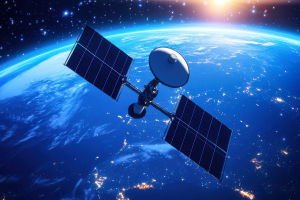Satellites play an indispensable role in modern society, influencing various fields such as communication, scientific research, weather forecasting, and more. These technological marvels, launched into space by rockets or spacecraft, orbit Earth or other planets just like natural satellites do.
As we interact with satellites in our daily lives, from GPS navigation to global internet connectivity, understanding their structure and functionality is key to appreciating their impact.
The Structure of Satellites
At the core of every satellite are two primary components: the payload and the satellite platform. The payload refers to the instruments or equipment designed to fulfill the satellite’s mission, whether it be for communication, earth observation, or scientific research. The satellite platform, on the other hand, is the infrastructure that supports the payload, ensuring it operates smoothly. These platforms typically remain stable for extended periods but may undergo minor upgrades before being replaced entirely.
How Satellites Work
To understand how satellites operate, we need to explore the sub-systems that ensure their smooth functioning. Key systems include:
Service Systems: These manage the satellite’s day-to-day operations.
Thermal Control Systems: These systems keep the satellite’s temperature regulated in the harsh environment of space.
Attitude and Orbital Control Systems: These ensure that the satellite remains oriented correctly and follows its desired path.
Telemetry and Remote Control Systems: These enable communication between the satellite and mission control.
Each satellite's platform is designed to be flexible enough to carry different payloads based on the mission’s requirements. For example, the "Chang'e" lunar missions used the same platform but had different payloads to suit their specific tasks.
The Power Supply of Satellites
A major challenge for satellites is their power supply. Since they are difficult to maintain once in space, their power sources must be reliable. Most satellites rely on solar panels to generate electricity, though some may use radioactive isotopes or thermoelectric generators. This combination ensures that satellites remain operational even when solar energy is limited, such as when they orbit the dark side of the Earth or during long-duration missions.
Thermal Management and Cooling Technologies
Managing the heat generated by a satellite’s electronics is crucial for ensuring that its systems operate correctly. Overheating can lead to malfunction, so cooling systems are integrated into the design. Common cooling technologies include:
Peltier coolers: Devices that use electrical energy to transfer heat.
Thermoelectric coolers: These coolers leverage the properties of semiconductor materials to maintain an optimal temperature.
Nernst-Ettingshausen cooling: This involves cooling based on the thermoelectric effect, often used for more precise temperature control.
Applications of Satellites in Our Daily Lives
Satellites aren’t just a distant technology used for scientific purposes. They impact us daily, from the GPS in our cars and phones to the weather forecasts we rely on. Communication satellites enable global broadcasting and internet access, overcoming geographical limitations. Earth observation satellites provide critical data for disaster management, environmental monitoring, and agricultural planning.
The Future of Satellite Technology
Looking ahead, satellite technology is evolving rapidly. New advancements promise to make satellites smaller, more efficient, and more capable. The future could see a significant increase in the number of satellites in orbit, especially with the rise of projects aimed at providing global internet coverage. The role of satellites in space exploration is also set to expand, as they are critical for studying other planets and deep space.
Final Thoughts
Satellites are much more than just technological wonders in orbit. They have become essential to our everyday lives, providing critical services like communication, navigation, weather forecasting, and more. As space exploration and technology continue to evolve, the role of satellites will only grow more significant. We can expect even more groundbreaking innovations in satellite technology, which will continue to shape the way we interact with the world.
Thanks for exploring the incredible world of satellites with us, Lykkers! Keep an eye out for more fascinating insights into the technologies shaping our future.


